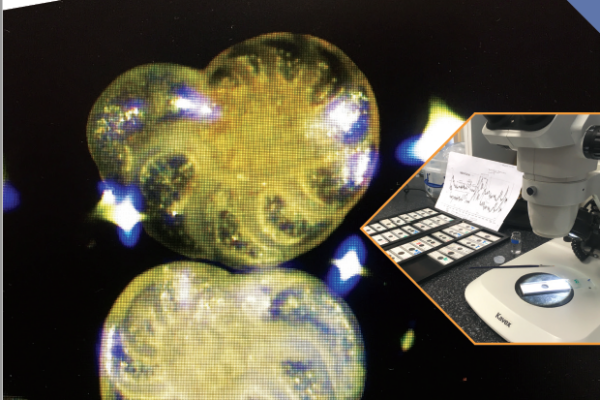Category: News

Annual Review 2023
Read More
Project Title: Are cosmetics and sunscreens a new invisible threat to our Oceans?
Organic UV filters are the active compounds of sun protection products and are widely used in cosmetics, and more generally in Personal Care Products (PCPs). They represent an invisible threat to our oceans affecting the biodiversity and marine resources. Several studies reported the worldwide occurrence of UV filters in coastal waters and their bioaccumulation in various marine organisms. To assess the toxicity of UV-filters, there is an urgent need to understand to what extent marine microorganisms – crucial in the major biogeochemical balances of the planet – are affected by those toxic chemicals.
In this project, we demonstrated the dose-dependent bactericidal effects of commonly used organic UV filters (Benzophenone; Ethylhexyl methoxy cinnamate also known as octinoxate; Octocrylene; 4-Methyl benzylidene camphor; Homosalate) on marine bacteria, selected based on their environmental relevance, combining photobiology, toxicity and proteomics analysis. Our results revealed that the increasing use of sun blockers could have detrimental impacts on bacterioplanktonic communities in coastal areas.1 Epibacterium mobile, an environmentally relevant marine bacterium, was shown to be sensitive to the controversial oxybenzone. While cellular morphology and membrane integrity seemed intact, the enzymatic activity was affected in a dose-dependent way. Proteomics revealed differential regulation of 56 proteins involved in major cellular pathways.2 Genes involved in UV filters resistance are still unknown. To fill the gaps in the understanding of the link between genome and resistance phenotype, in silico comparative genomic between UV filters sensitive and resistant bacteria were conducted. 3
The optimisation of the metaproteomics on natural communities has been significantly delayed and impacted by COVID due to travel restriction, however the preliminary data obtained will strengthen our future applications to competitive grants. The microcosm-based experiments were performed as it was stated in the proposal. We applied for no cost extensions, because of the limited access to the lab during the pandemic. But there was no change in the overall aims of the project. The UV-COP project led to the publication of three research articles.
Three publications arising from the UV-COP project:

Awarded: Research Incentive Grant
Field: Earth & Environmental Sciences
University: University of Stirling